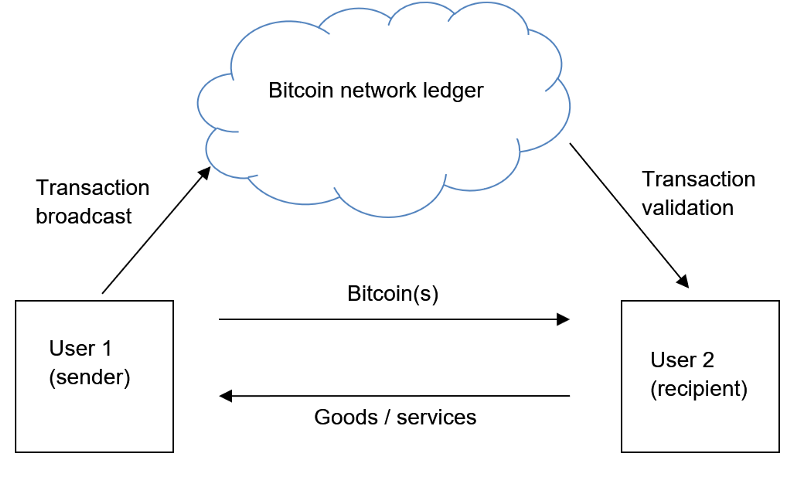The Bitcoin system may be broken down into the following “phases”:
- Mining;
- Holding Bitcoin; and
- Transferring Bitcoin.
Each of these phases are discussed in turn below.
(a) Mining
In its May 2013 report to the United States Senate Committee on Finance, the United States Government Accountability Office described the mining process in the following terms:
“Bitcoin are created and entered into circulation through a process, called mining, that members of the bitcoin network perform. To perform the work of mining, bitcoin miners download free bitcoin software that they use to solve complex equations. These equations serve to verify the validity of bitcoin transactions by grouping several transactions into a block and mathematically proving that the transactions occurred and do not represent double spending of a bitcoin. When a miner’s computer solves an equation, the bitcoin network accepts the block of transactions as valid and creates 25 new bitcoin and awards them to the successful miner.”[1]
As noted, the mining process involves the Bitcoin network updating a shared public ledger or log on the Bitcoin network:
“The entire network is used to monitor and verify both the creation of new Bitcoin through mining, and the transfer of Bitcoin between users. A log is collectively maintained of all transactions, with every new transaction broadcast across the Bitcoin network. Participating machines communicate to create and agree on updates to the official log. This process, which is computationally intensive, is in fact the process used to mine Bitcoin…” [2]
(b) Holding Bitcoin
Each Bitcoin user has a digital wallet known as a “Bitcoin wallet” which incorporates a public/private key pair.
Bitcoin are recorded in the shared public ledger on the Bitcoin network as being under the control of a selected individual Bitcoin wallet and key pair. The wallet and key pair are the only way of accessing the Bitcoin. [3]
As such, Bitcoin are “owned” and “held” by the user who has control of the relevant Bitcoin wallet.
(c) Transferring Bitcoin
A Bitcoin wallet is also how Bitcoin are transferred between users. Specifically, Bitcoin are sent or received from one or more “Bitcoin addresses” associated with a Bitcoin wallet. A Bitcoin address is an alphanumeric string derived from the public key incorporated in a Bitcoin wallet.
The process of transferring a Bitcoin may be summarised as follows:[4]
- the recipient provides their Bitcoin address to the sender;
- the sender adds the recipient’s Bitcoin address and the quantity of Bitcoin to be transferred to a “transaction” message;
- the sender’s message is digitally signed by the sender’s private key incorporated in the sender’s Bitcoin wallet. The sender’s public key is also announced to enable verification of the message;
- the “transaction” message is broadcast over the Bitcoin network and verified, and the Bitcoin transferred from the sender’s address to the recipient’s address.
Only the first two steps involve action by the sender and recipient. The latter two steps are automatically executed by the Bitcoin software and the Bitcoin network.[5]
Importantly, Bitcoin are transferred directly from the sender to the recipient. Bitcoin “miners” validate and update the transaction in the public ledger, but are not payment intermediaries.
A basic Bitcoin transaction may be shown in diagrammatic form as follows:

Notes:
[1] It should be noted that the rate of creation of 12.5 new Bitcoin is current rate at the time of this paper, and it should be understood that the Bitcoin algorithm is designed to reduce that rate over time (halving approximately every 4 years).
[2] See prior posts.
[3] Bollen, Rhys, “The Legal Status of Online Currencies: Are Bitcoin the Future?” , (2013) 24 JBFLP 272 at 275.
[4] http://en.bitcoin.it/wiki/Introduction accessed 13 January 2014; http://www.forbes.com/sites/investopedia/2013/08/01/how-bitcoin-works/, Forbes(1 August 2013), (accessed 13 January 2014).
[5] Ibid.

